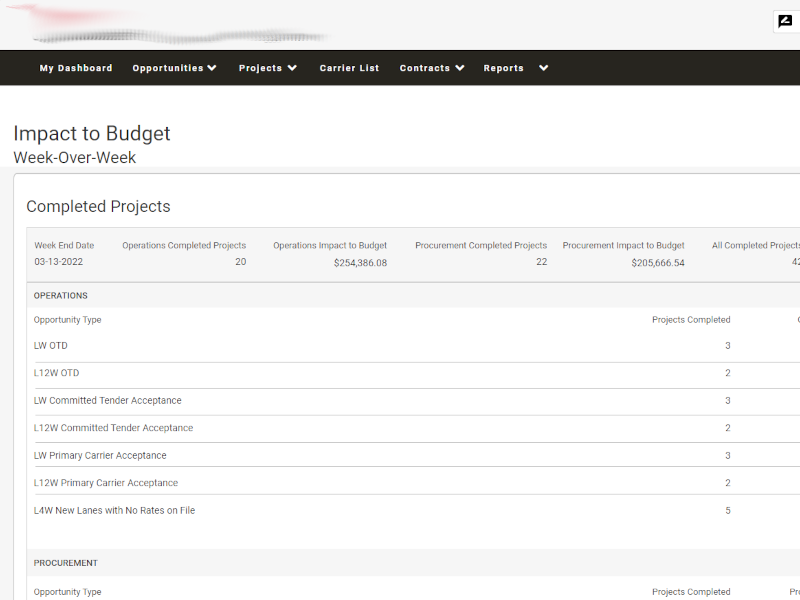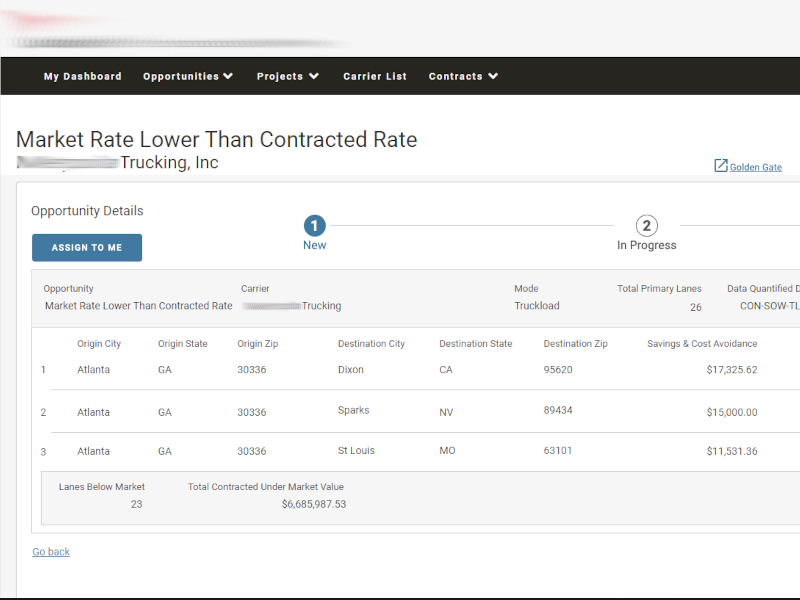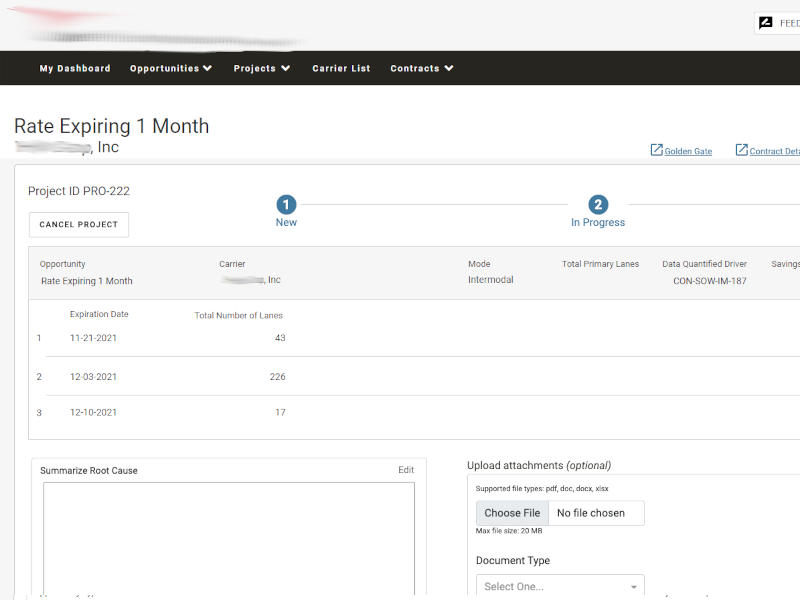Project Date: 2021
Introduction: The client is a logistics company that specializes in transportation and warehousing of pharmaceutical and medical goods. The company needed an application to monitor their procurement and operations opportunities.
Background: The company had been using a manual system comprised of spreadsheets and email communications to track and resolve procurement and operations opportunities. They were looking to optimize their processes and improve their service delivery to clients.
Scope: The scope of the project was to develop a Cloud-based application that would automate the monitoring of the company's procurement and operations opportunities. The application would need to be accessible to all relevant staff and provide real-time alerts for contract renewals, insurance expirations, and truck route assignments to avoid any potential losses or delays.
Approach: To develop the application, the project team followed an agile approach that involved the following phases:
- Requirements Gathering: Several meetings were held with the company's procurement, logistics, and operations teams to gather requirements. They identified the critical data points the application needed to track and the alert thresholds for each.
- Design/Testing: Using the requirements gathered, screens were designed and imported into Axure RP to create a fully interactive prototype. The prototype was then tested by members of operations and procurement to obtain and incorporate feedback before passing designs to development.
- Development: The application was developed using the agile methodology. The application was developed in sprints, with each sprint delivering specific functionality.
- Final Testing: Testing involved functional testing, integration testing, and user acceptance testing. The team collaborated with the company's procurement, logistics, and operations teams to ensure that the application met their requirements.
- Deployment: After completing testing and resolving any issues, the application was deployed to the Cloud.
Results: The application was a success. It provided real-time alerts for contract renewals, insurance expirations, and truck route assignments. The alerts helped the company to avoid potential losses and delays, improving their service delivery to clients and enabled the company's staff to manage their procurement and operations opportunities more efficiently.
Conclusion: Developing an application for monitoring procurement and operations opportunities can significantly improve a logistics company's service delivery. By automating critical processes and providing real-time alerts, logistics companies can optimize their operations, reduce losses, and enhance their service delivery to clients.


